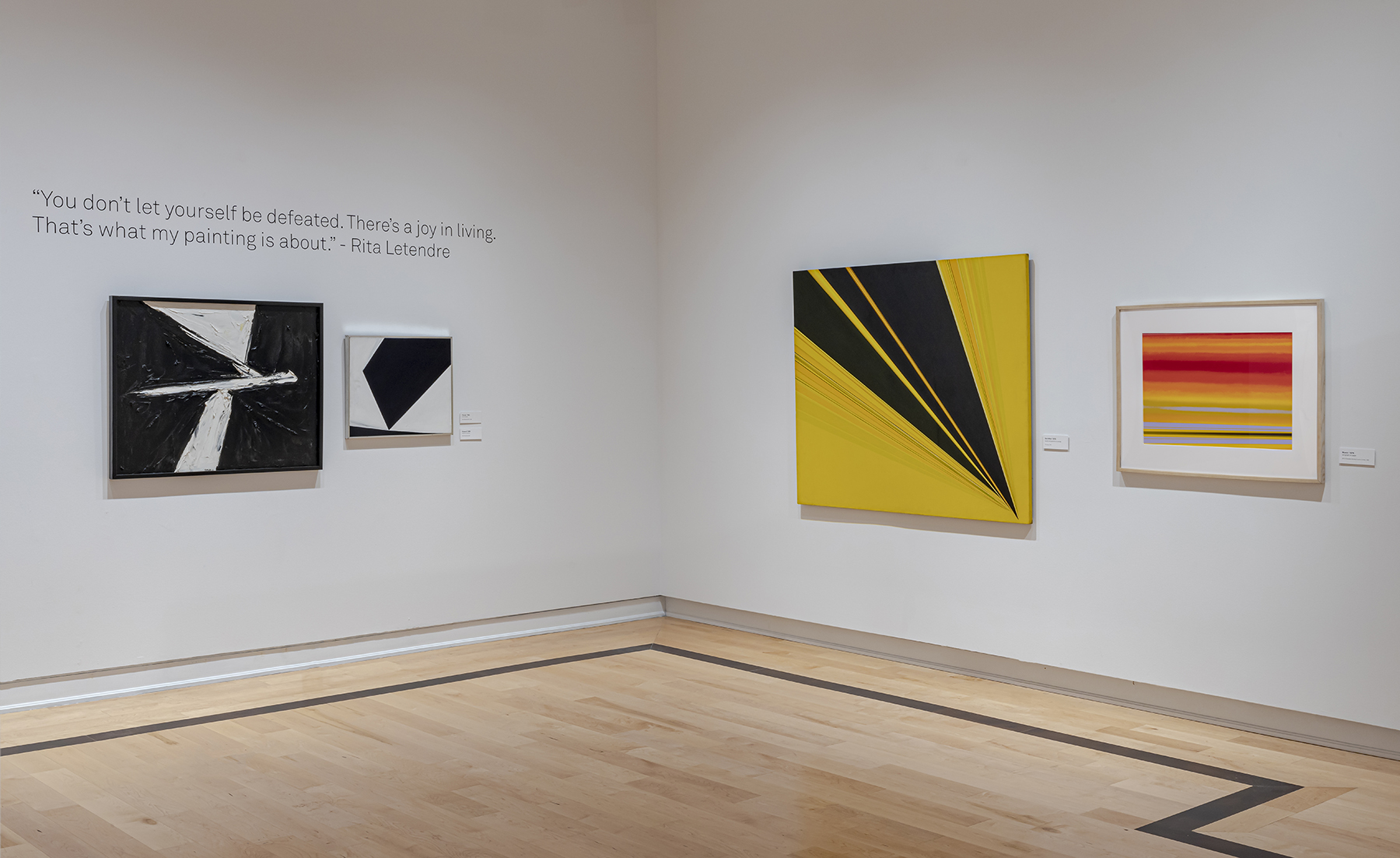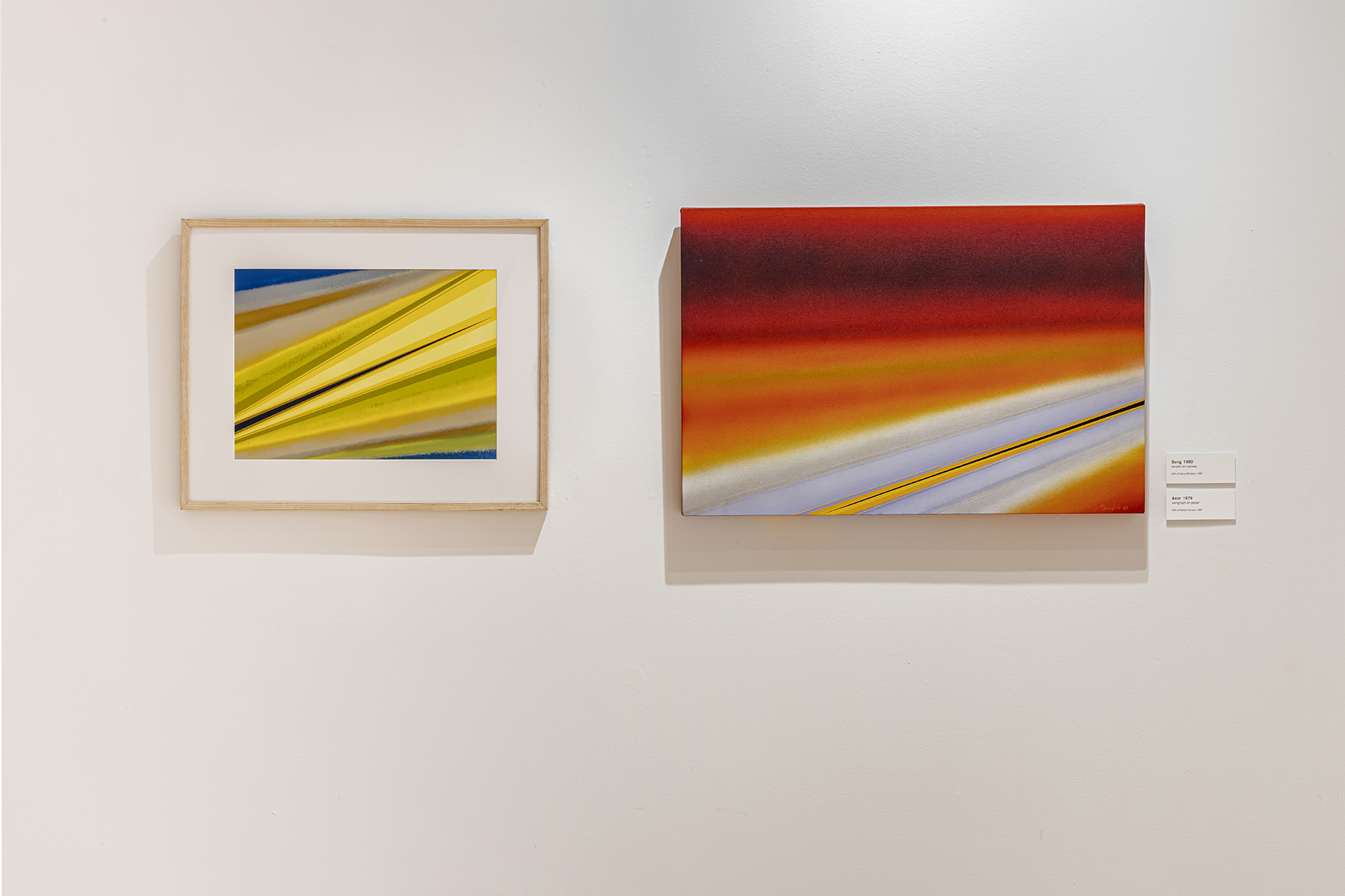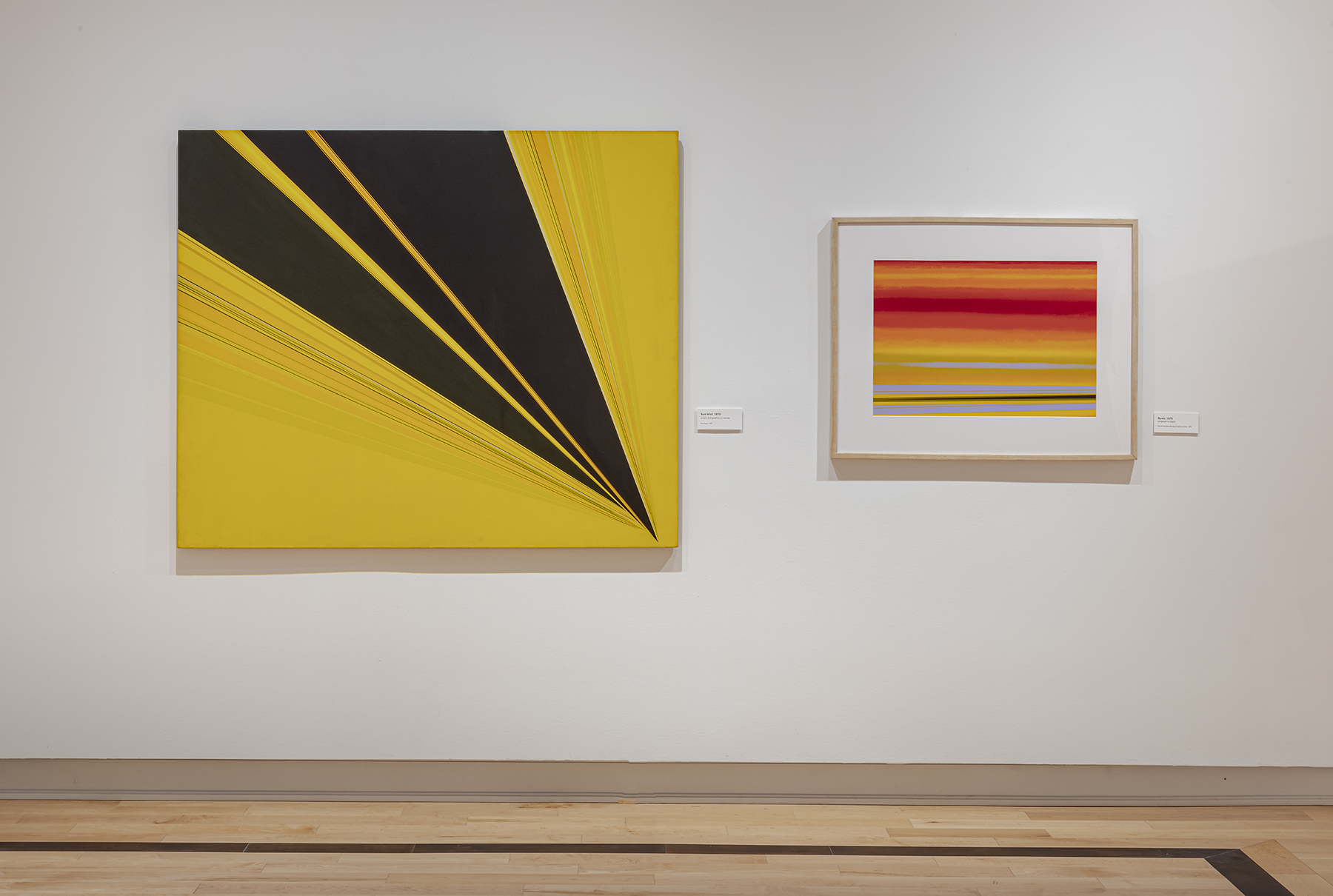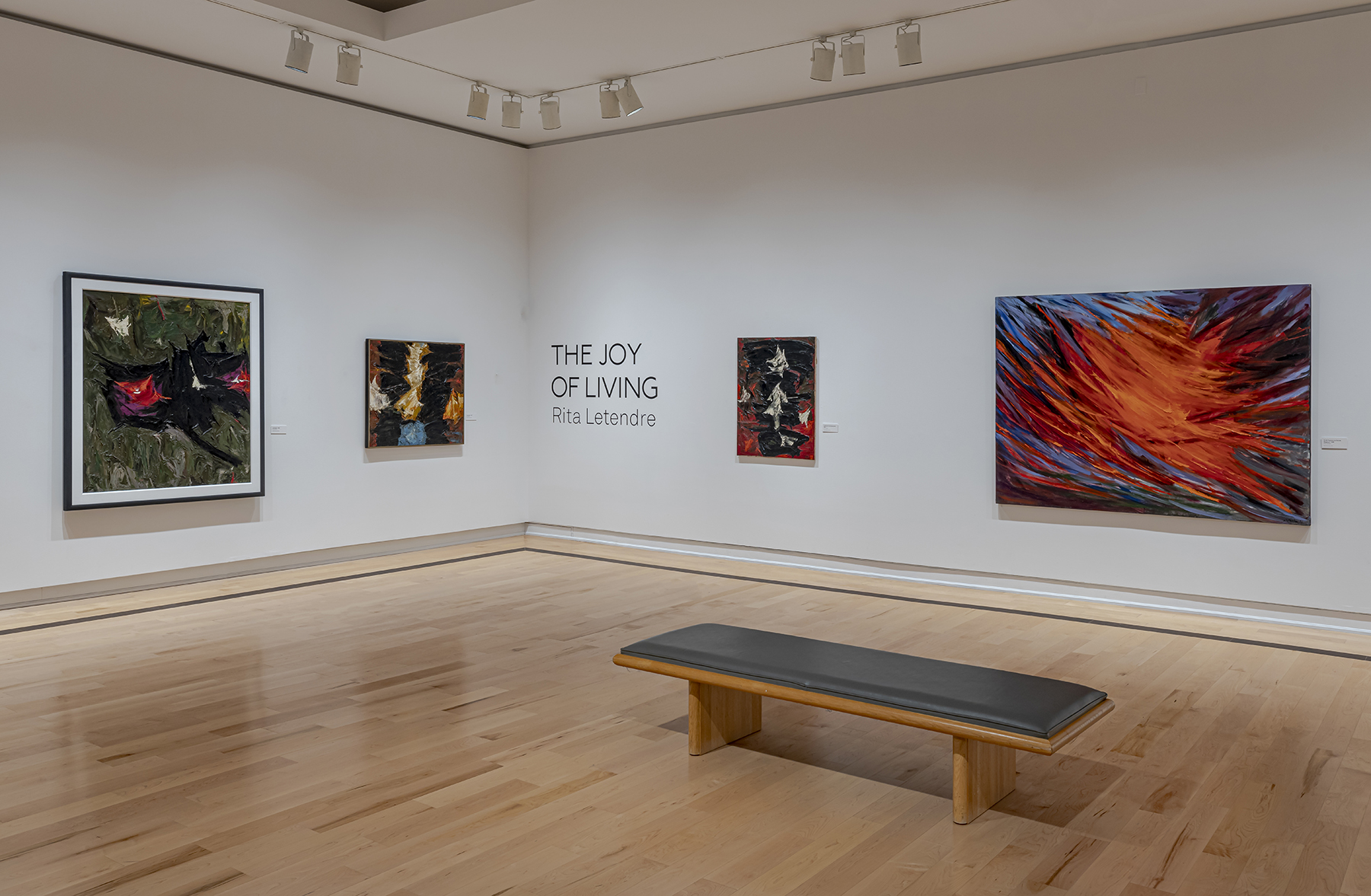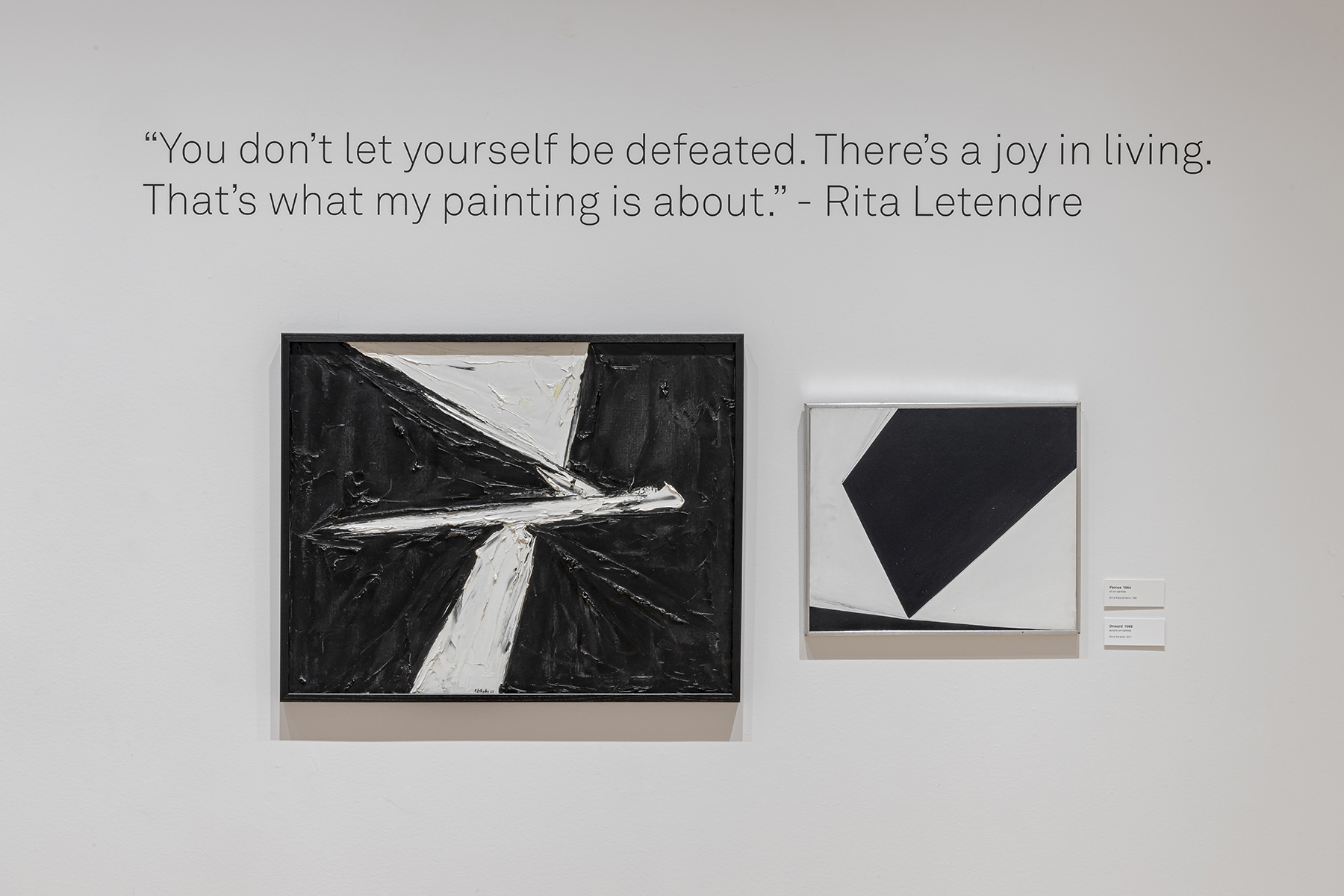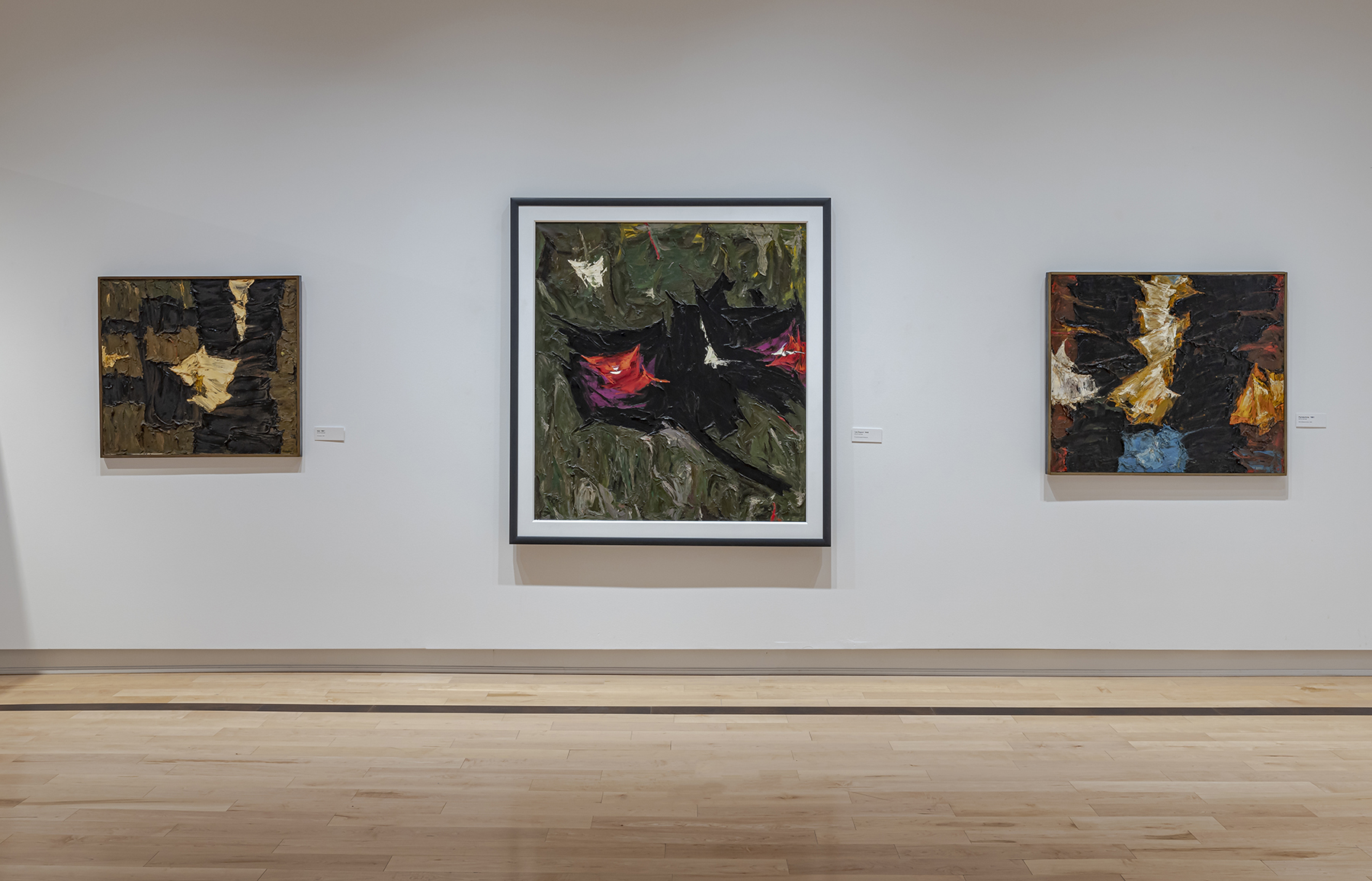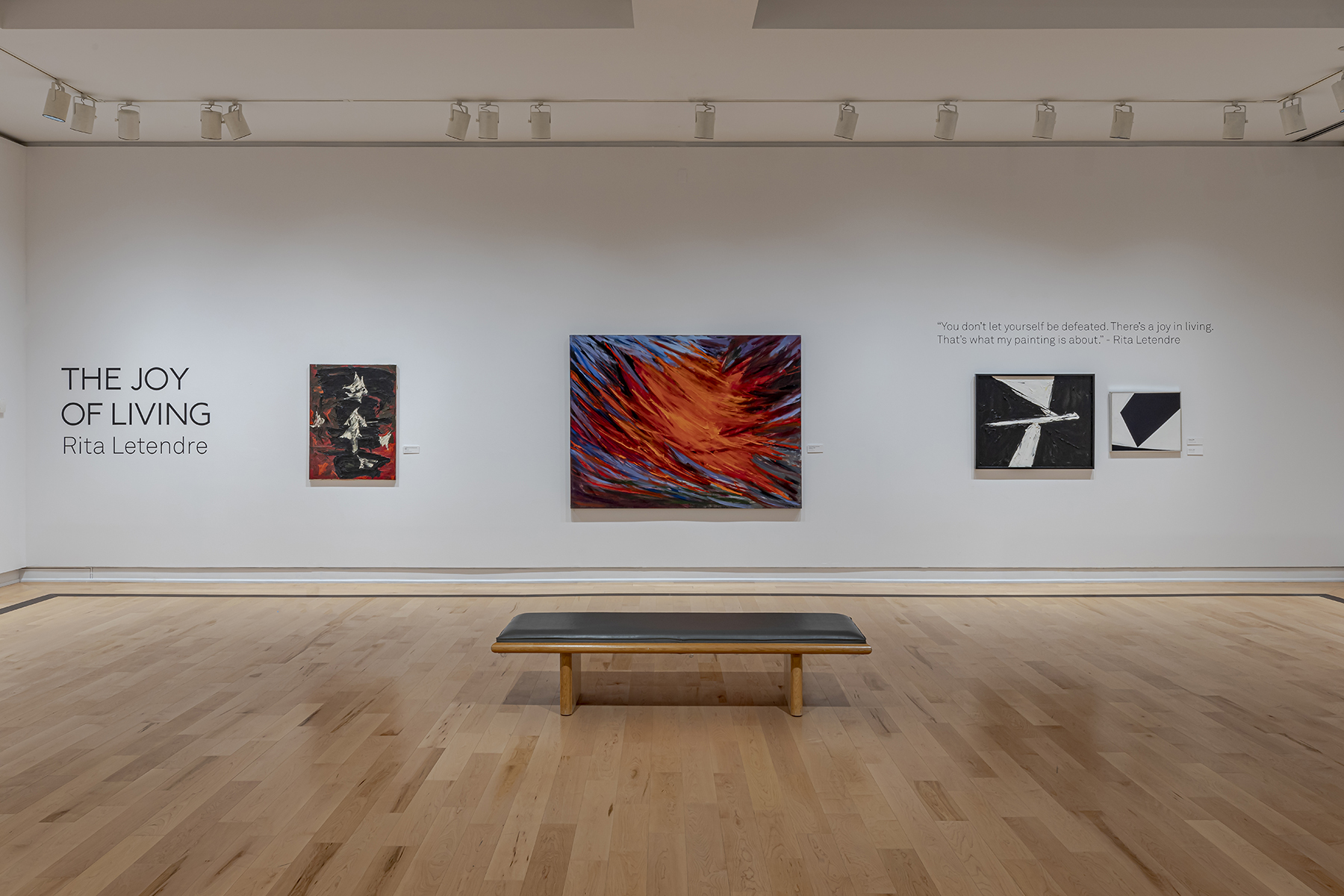Born in 1928 in Drummondville, Quebec to Abenaki and Quebecois parents, Rita Letendre moved with her family to Montréal in 1941. After attending Montreal’s École des Beaux-Arts in 1948, she left the following year finding the school’s teaching style too conservative. “To make a painting showing a little house on a street, that doesn’t show life” she said, “I wanted to show the joy of life, its difficulties, its power.” Abstraction allowed her to do just that, and soon she caught the attention of the artist Paul-Émile Borduas, a founder of the Automatiste group. She blossomed from there and soon found her own direction.
Letendre describes her long career as a continual progression, claiming, “in my case, one tiny step leads to another.” Works in this exhibition, from the RMG’s Permanent Collection, capture Letendre’s ever-evolving style of abstraction. It includes paintings from her abstract expressionist beginnings, her crisp hard-edged abstractions, as well as the vibrant and dynamic gestural works from her most recent series.
The Joy of Living
Photos by Toni Hafkenscheid
